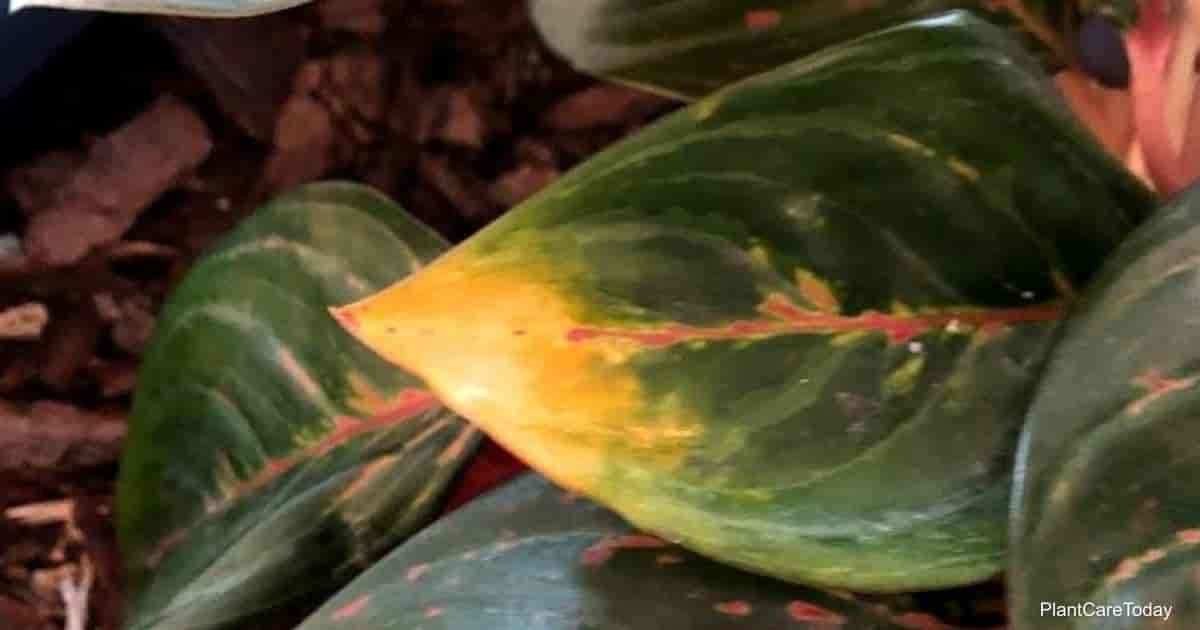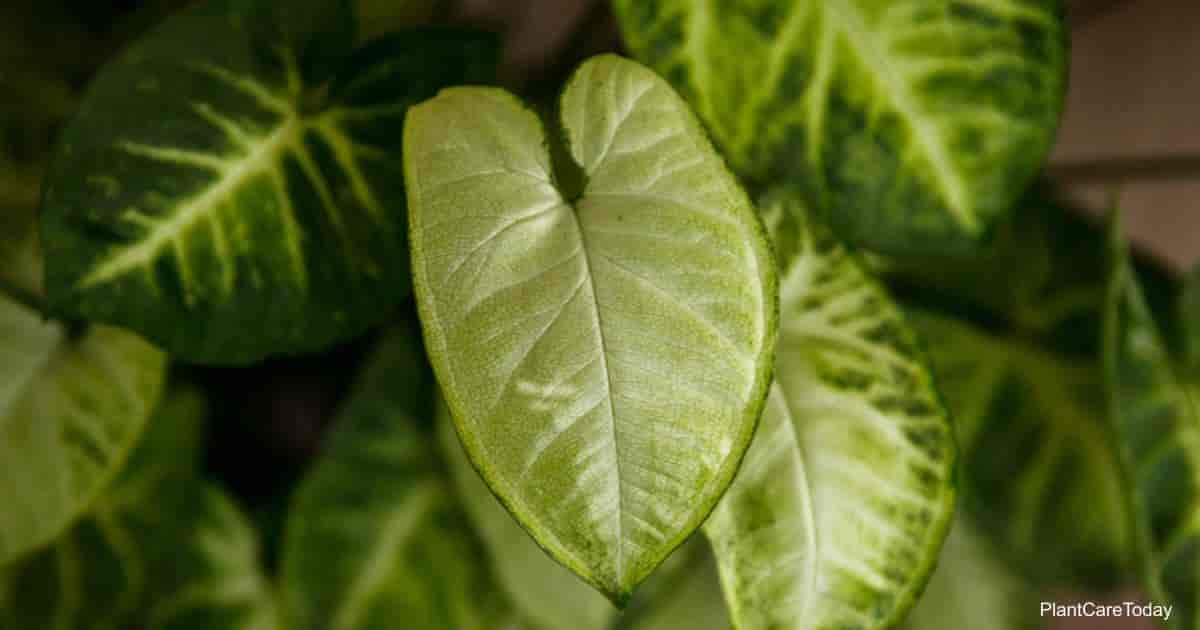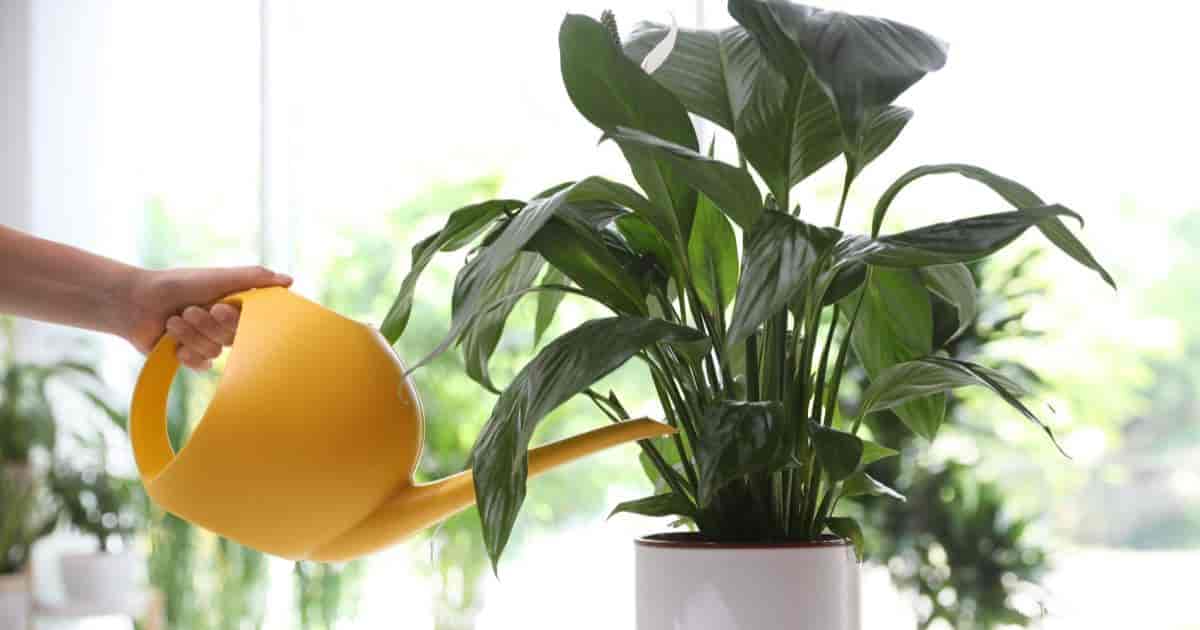Does your peace lily have brown tips? That question is a popular one we receive daily. It usually goes something like the one below from Sandra.
Question: I have brown tips on my peace lily plant (Spathiphyllum). In fact, many of my plants seem to have or get brown tips. Can you tell me why? Sandra
PinPeace lily with white flowers
Answer: Sandra, your peace lily question or condition is not an unusual one. There are many reasons why tips turn brown on the peace lily. Other houseplants experience the problem too – bamboo palm, Dragon Tree Dracaena, and spider plants.
Here are a few reasons for brown tips:
- Houseplant Fertilizer– more correctly – over-fertilizing causing salts to burn.
- Excess water or over-wateringand under-watering
- Pests– (I prefer natural pesticides for control)
or a combination of these factors and others. Throw into the mix the different peace lily varieties and it gets very confusing on why many indoor plants including peace lilies get brown tips.
Peace Lily Varieties Grown for Flowers
Today, many peace lily varieties are grown for the number of flowers they produce. Others, are large floor plants and look beautiful without flowers.
But flowers come at some expense. The cost? Nutrients going to the flowers do not go to the plant. When plants hold a lot of foliage, they require more water to support the foliage.
You may notice lighter colored leaves and if the plants dry out too much you can get brown tips.
The older leaves at the bottom… is that where the brown tips are occurring. The peace lily leaves are not “pulling” food the same way, new growing leaves do. Brown tips and leaf loss, in this case, maybe natural.
What about varieties grown more for foliage? These peace lilies grow in 10″ inch and larger pots. They may present the same problem in looks, but for a different cause.
In the nursery, plants are watered and fertilized on a regular basis. They may be watered every day or every other day. Suddenly, the plant is shipped to a nursery or garden center. At the nursery, it does not receive the same treatment and care.
The peace lily may get less water and the fertilizers (salts) which remain in the pot become more concentrated. This higher concentration due to reduced moisture and can cause burning the roots.
Underwatering – 2 Ways (Or More)
The first is not watering the plant enough and allowing the plant to wilt down before watering. A little droop may be OK, but not laying on the ground. I will admit this is rarely the case with home owners.
The second method is what I’ll term “fake watering.” We think we water but we don’t.
This occurs when the soil dries out, the soil may even be pulling away from the pot and the plant is re-watered. The water will take the path of least resistance and heads to the bottom of the pot out the drainage holes.
The soil may become moist in areas but the root ball or soil mass doesn’t become moist. It may be moist enough to let the plant perk up but the soil is still too dry.
Again, the salts can burn the roots or the plant can protect itself by dropping foliage it needs to support.
- Peace Lily with LightBrown Tips or Leaf Edges
- Peace Lily leaves turn brown
- Peace Lily leaves turning black
- Peace Lily with flowers turning brown
- Or all the above!
Homeowners, Peace Lily & Brown Leaf Tips
Let’s look at each of the three items mentioned earlier to help determine what is causing the peace lily brown tips. This could be a sign of what is to come or the result of one or all three situations.
House Plant Fertilizer
We briefly discussed fertilizer and how the salts can cause brown or burning tips. Most indoor plants you buy come “equipped” with enough fertilizer in the soil to feed the plant for a long time.
Once the plant arrives at its new home:
- The light will be reduced
- Water needs reduced
- The need for “feeding” reduced
The plant will also undergo some acclimating. Some leaf drop may occur as the plant now has less light to support all the leaves.
The first place to start is to reduce the conditions that promote brown tips.
STOP FERTILIZING your plants.
Wait a while before starting any type of fertilizing – I recommend 6 months to a year.
If you are going to fertilize using a liquid feed do it correctly.
How To Water Plants Completely!
- Fill a 5-gallon bucket about 1/3 full with water (avoid tap water) I use distilled water for plants
- Place the plant into the bucket and completely submerge the entire root ball, pot soil and all.
- Add more water if needed.
- Soak the root ball until no more bubbles come to the surface.
- Remove the plant from the bucket
- Allow all the water to drain off through the drainage hole.
- Return the plant to its decorative container
Now your plant is thoroughly watered and its time to fertilize.
- Every third or fourth watering repeat the process
- Add a water-soluble balanced fertilizer to the water at 1/4 to 1/3 strength after thoroughly watering.
Excess Water or Over-Watering and Under-Watering
You’ll notice in the watering example above the plant was thoroughly watered and the excess water drained off. Many homeowners continue to water their houseplants and the water collects at the bottom of the pot.
The root system cannot use all the water provided. The roots may be swimming in water and over time the roots begin to experience root rot.
The plant first responds with some brown tips. The plant is alerting you of some potential stress issues it is experiencing.
Less roots mean less leaves. The plant will usually begin losing the oldest leaves first. If not addressed more rotting of roots occurs. The plant begins to lose leaves and some basal rot sets in and the whole plant falls apart.
- Water thoroughly
- Make sure the drainage holes are not covered.
- DO NOT allow the plant to sit in a puddle of water.
- This is why sub-irrigation planterswork so well.
Under-watering also puts stress on the plant. Roots need water to support the foliage above the soil.
What happens when plants do not receive enough water?
Plants respond by reducing the amount of leaves they can support.
Plants going through a repeated under-watering cycle begin to display brown tips.
Pest and Disease
Pest such as spider mites suck the juices out of your plants and reduce their vigor. The pest issue begins to show up with the foliage having an almost grayish look and tips begin to brown.
The root system may be fine but what’s happening above the soil line is where the problem lies.
Excess Heat
Too much heat is another possibility. You may be asking yourself how can I have too much heat, it’s 72° degrees Fahrenheit in the house.
That may be true but a plant sitting next to the window can be heating up more than you realize. We all have hot and cold spots indoors.
Why Do I Have Brown Tips On My Spathphyllum? There Are Many Reasons!!!
Plants are great communicators. They react in ways we can understand if we stop and look at the situation.
Plants may not tell us what is wrong BUT they do tell us to LOOK something is wrong.
When you’re looking for answers to WHY, on your plants, ask some questions.
Many times it is the little things we may not pay attention to that are causing the problems.
What Change in the Peace Lily Environment?
Something as simple as – Yes we opened the house up after a long winter to air things out. The temperature was still a little cool but a light sweater was all I needed. Did the plants get a sweater?
- Did you move the plant?
- Has the watering changed?
- Is the plant new and getting acclimated?
- What is the root system like?
- What variety is it?
- Is the plant actively growing? Putting out new leaves with good color.
ALL valid questions.
Don’t assume that because your peace lily has some brown tips that your plant needs repotting or fertilizer. It may be the opposite. Another question we get all the time is: why does my peace lily not flower – that’s another topic altogether.
Credit : Gary Antosh (https://plantcaretoday.com/why-do-peace-lily-get-brown-leaves-and-tips.html)





